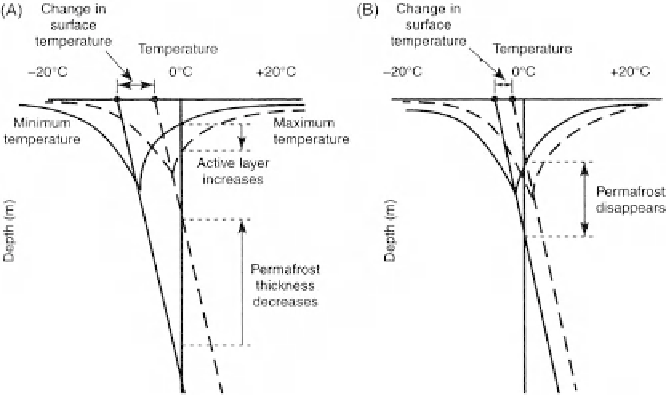Geology Reference
In-Depth Information
Figure
8.1.
Graph showing the long-term effect of a 4 °C warming upon the ground temperature
profi le. (A) Continuous permafrost zone; (B) discontinuous permafrost zone. In both cases, the
active layer thickens and near-surface permafrost thaws. In discontinuous permafrost, where ground
temperatures are close to 0 °C, thaw degradation results in disappearance of permafrost. In situation
(A), permafrost degrades in the near-surface and decreases in overall thickness.
(Brown, 1974; French, 1974b, 1975a; French and Egginton, 1973; Mackay, 1970; Rampton,
1974).
The importance of thermokarst is commonly underestimated. Furthermore, as will be
explained in Part III, thermokarst has been neglected in the study of Pleistocene cold-
climate phenomena (Dylik, 1964b). A full discussion of Pleistocene thermokarst is given
in Part III.
8.2. CAUSES OF THERMOKARST
The development of thermokarst is due primarily to the disruption of the thermal equi-
librium of the permafrost consequent upon an increase in surface temperature and a cor-
responding increase in the depth of the active layer. The geothermal effect is illustrated
in Figure 8.1.
8.2.1. General
There are many reasons why thermal disequilibrium and permafrost degradation may
occur. These are summarized in Figure 8.2. They are classifi ed as being geomorphic,
vegetational, or climatic, and either natural or human-induced in origin. Typical trigger
mechanisms are also indicated.
With respect to regional climate change, thermokarst occurs when either the mean
annual temperature of the soil rises or when there is an increase in the amplitude of
ground temperature. The latter implies increased continentality of climate while the
former implies amelioration (overall warming) of climate. We must also differentiate

